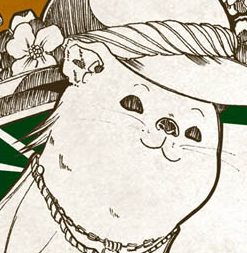
Artist Research: Hanna Hoch, DADA and Russian Constructivists
On Hanna Hoch: Hannah Höch was a prominent Dada artist from Germany, noted for being an active female artist. Prominent female figures who expressed themselves were rare!
She created photo-montages from very different and unrelated images – one element that was later adopted by other artists in her time.

Cut with the Dada Kitchen Knife through the Last Weimar Beer-Belly Cultural Epoch in Germany by Hannah Höch, 1919
This style of photo-montage is, strangely enough, something that I’ve seen in quite a few Japanese Visual-Kei, and other, music videos. I would have never guessed the relationship between the two until I’ve read that Höch’s works were influential to the punk movement aesthetic.
After reading up on Höch, I’ve gone on to do research on yet another female artist – Lyubov Popova. Popova had a short career, passing on from scarlet fever at age 35.
Popova is an early and vital Russian Constructivism artist who helped shaped the philosophy and style of the movement. She uses the geometric nature of Suprematism, but made it dynamic and seem more like a ‘construction’ with influence from Cubist art.

Air + Man + Space by Lyubov Popova, 1912
She, along with a few fellow Russian Constructivists, later on converted to applied art and design to shape their art for Soviet art activities that in line with the Constructivism philosophy – to make art for social change, rather than personal expression.
On Dada: Dada is an anti-authoritarian movement and strongly opposes group leadership or a guiding ideology. Dada art is satirical and nonsensical in nature.
Dada was also a negative reaction and was found during First World War in Zurich.
On Russian Constructivists: Russian constructivism was a movement between 1913 to 1930. It was an artistic and architectural philosopy, and a rejection of autonomous art – art for art’s sake. Russian Constructivism was the result of an ideological split after Russian Revolution in 1920s.
Up until this point, Suprematism was in practice. Hence the split was between for art to stay as a spiritual activity, or for art to serve a new communist society. Artists who created art with the latter in mind would later be called Russian Constructivists.
Two known artists are Vladimir Tatlin and Alexander Rodchenko. The term Russian Constructivism was first used to describe Rodchenko’s works in 1910, then Tatlin’s constructions in 1913.
Russian Constructivism is a philosophy and therefore, any form of art can be a Russian Constructivist art as long as it serves the Constructivist philosophy. Due to how close it is to Suprematism, a huge amount of Suprematism art that served the communist society would be considered Constructivist art as well.
Use of unconventional Tools from 2D-3D, photo-montage and collage
This week, I did research on unconventional tools for making art and came across Mark Wagner. Wagner creates portraits and pictures through dollar bill collages.
While there are many other unconventional methods that are also extremely interesting, Wagner’s dollar bill collages revolve around the philosophy of his creation. He breaks the taboo of destroying money to make a statement as money is important to everybody and invokes emotions.

Abe Lincoln by Mark Wagner
According to an interview, it took him to shake off the feeling of ‘something I shouldn’t be doing’ and now he has come to terms with cutting it up.
To me, Wagner’s journey is an extremely important message. It is definitely most important to respect a system, country and culture, but even on a non-illegal scale, growing up where we are acclimates us to certain feelings of ‘wrongness’. I feel that there should be no wrong as long as you take your materials and art seriously.
Wasting food is one – I feel bad when I waste food. When I was in primary school and colouring rice for a project, I felt bad about it because it was a food item. Everyone in primary school tells me that I must cherish food. After reading up on Wagner, however, it gives me a very different perspective on the use of mediums!
While it is important to cherish materials, it is also important to work and express myself in art and not just trail after old master in the shadows. Through Wagner’s works, I’ve both gained more awareness, care and respect for my materials! I’ve learnt how powerful the choice of material is in a piece as well.
References
Hannah Höch: German Photomontage artist
http://www.theartstory.org/artist-hoch-hannah.htm
What is Dada:
https://www.thoughtco.com/what-is-dada-182380
Russian Constructivism: http://www.csun.edu/~pjd77408/DrD/Art461/LecturesAll/Lectures/lecture07/Constructivism.html
The influence of Russian Constructivism in the graphic arts: http://artandthis.typepad.com/art_and_this/2009/06/mark-danceys-graphics-and-russian-constructivism-.html
Rodchenko’s Designs: https://learn2design.files.wordpress.com/2012/09/rodchenko_design.pdf
Liubov Popova: From Painting to Textile Design
http://www.tate.org.uk/research/publications/tate-papers/14/liubov-popova-from-painting-to-textile-design
Lyubov Popova
http://www.visual-arts-cork.com/famous-artists/lyubov-popova.htm
How Collage Artist Mark Wagner Makes Portraits From Dollar Billshttp://www.slate.com/blogs/the_eye/2014/01/14/collage_artist_mark_wagner_currency_portraits.html















